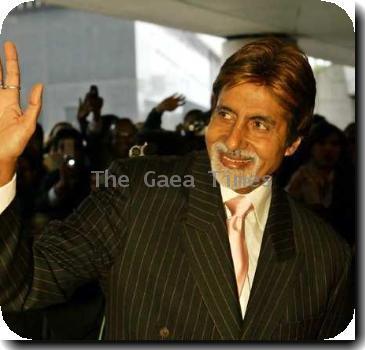35 years on, the ‘Sholay’ fire still burns
By IANSFriday, July 23, 2010
NEW DELHI - It drew its inspiration from multiple Hollywood movies but went on to become the quintessential Indian film, perfectly balancing drama and tragedy, romance and violence, comedy and action. This Aug 15 it will be 35 years since “Sholay” was released - three decades and more of Gabbar, Jai, Veeru and Basanti still striking a chord.
Sometimes described as an Indian curry western, “Sholay” is still a reference point for Indian cinema and impossible to pin down to any one genre. It was about the undying friendship between Jai and Veeru, the unspoken love of a young widow, the exuberant romance between a garrulous ‘tonga walli’ and a flamboyant thief, the immensely tragic life of an idealistic police officer and, of course, Gabbar Singh, the dacoit who struck terror.
It worked at many levels, and still does for generations of film-goers who watch the 1975 multi-starrer for the ultimate movie-going experience. For some, it’s nostalgia and, for the young cinema buff, “Sholay” is a matter of curiosity.
Director Ramesh Sippy was called a magician for the spell he cast. The film is the ultimate high point for many stars - from the lead stars Amitabh Bachchan, Dharmendra and Hema Malini to the unknown Amjad Khan who as Gabbar became one of Hindi cinema’s best known villains. The cameos by character artists Asrani and Jagdeep were equally important to the success of the film and still remembered.
Even Macmohan, who had barely a dialogue in the film, was “Samba” till the day he died in May this year.
“We had no idea that this will become such a huge film. We conceived an idea and when we started working on the screenplay, gradually it dawned on us that the film has more than two important characters,” Javed Akhtar, who co-scripted the cult film with Saleem Khan, told IANS.
“After 35 years, even the minor characters are used in ads, promos, films and sit coms,” he said.
Ironically, there were few takers when “Sholay”, which translates to fire, released Aug 15, 1975. At three hours and 20 minutes, it was deemed too long. But, in an era where there was no television and no effective visual marketing tools, word of mouth worked. It ran for five years straight at Mumbai’s Minerva theatre, for instance.
“No multistarrer worked as ‘Sholay’ did. It’s got everything. It was a complete package. Initially, in the first two weeks, it didn’t do well but it picked up from the third week onwards and became an overnight sensation,” said trade analyst Taran Adarsh.
“It remains the box office gold standard, a reference point for both the Indian film-going audience and the film industry. For ‘Sholay’ is not merely a film, it is the ultimate classic,” film critic Anupama Chopra wrote in her book “Sholay: The Making of a Classic”.
“Even the starring animal, Dhanno the mare, has been immortalised.”
Technologically, too, the movie was one of its kind - “Sholay” was India’s first 70mm film and also the first stereophonic sound movie.
” ‘Sholay’ remains the Indian film industry’s monument to 70 mm filmmaking,” noted film historian Gautam Kaul told IANS.
Produced by G.P. Sippy at a budget of about Rs.3 crore at that time, it was completed by Ramesh Sippy over a period of two-and-a-half years. It was released with as many as 250 prints.
Scriptwriter duo Salim-Javed wrote themselves into posterity, their dialogues being mouthed across the country. They were at their creative best-from scripting action scenes, to flavouring it with romance and comedy-they served the tastiest ever curry for Indian audiences.
Even all these years later, it is still that rare film whose dialogue soundtrack was released along with the music. Who can forget “Kitne aadmi the?”, “Jo darr gaya, samjho marr gaya” or “Tumhara naam kya hai, Basanti?”
“This film was also the watermark for film scriptwriters, who until ‘Sholay’ were not paid so well… film scriptwriting became a better, respected and lucrative profession after ‘Sholay’,” said Kaul.
Item numbers may be a rage now, but legendary R.D. Burman served up one of India’s best with “Mehbooba, mehbooba”.
Inspired by Hollywood films like “Once Upon A Time In The West” (1968) and “Butch Cassidy and the Sundance Kid” (1969), “Sholay” still has to its credit a standing record of 60 golden jubilees across India. It was the first film in the history of Indian cinema to celebrate a silver jubilee at over 100 theatres across the country.
The plaudits have never stopped.
In 1999, BBC India declared it as the “film of the millennium”. Its run at the Bollywood box office even caught the attention of the Guinness Book of World Records, where it was inducted for its five-year run.
Corporate executive Harshad Jain sums up the “Sholay” magic. “I’ve seen it 300 times, I won’t mind seeing it 100 times more. It was the best part of growing up.”

